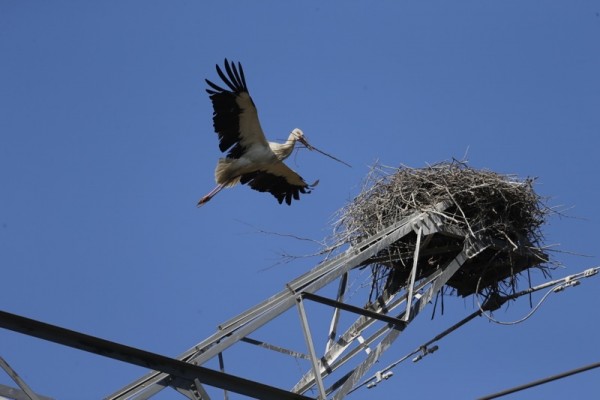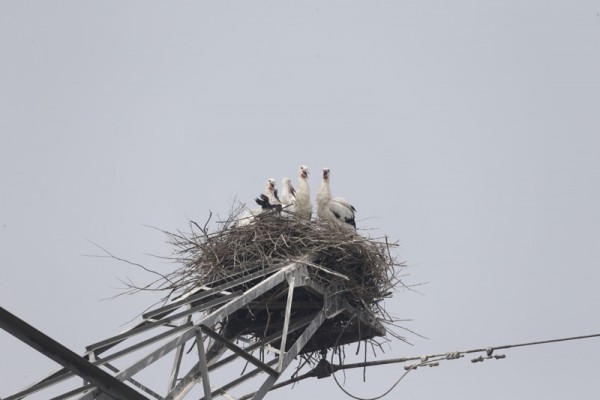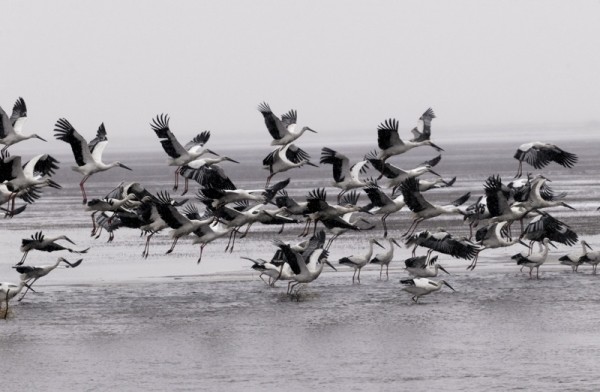
NESTING INSTINCT There was some celebration this fall when conservationists spotted a rare Oriental White Stork building a nest atop a wire pole in the Beidagang Binhai Wetlands Nature Reserve in Tianjin. The graceful, leggy birds, which stand some four feet tall and have black-fringed wings, are so endangered that there may be fewer than 3000 remaining in the world. But every year, they stop at the Tianjin wetland for a couple of weeks of rest before making their way south for the winter.
The Paulson Institute is supporting efforts to save the Tianjin wetland—and the beleaguered Oriental Storks. This wetland, and others all along China’s coast, are shrinking rapidly, as developers find clever ways around regulations set up to protect them. Why are the wetlands important? Not only are they home for rare migratory birds like the Oriental White Stork. According to a recent report by Chinese experts, China’s wetlands provide some $200 billion in eco-services, such as clean water. Wetlands also mitigate against climate change, protecting people from storms and rising seas; and they are important spawning grounds for fish.

FOUR SMALL MIRACLES Soon after the nest was built, conservationists discovered that four fluffy chicks had hatched. It was the first time Oriental White Storks were known to have bred in the wetland, which is threatened by encroaching industrial development, aquaculture and poaching. (In 2012, Tianjin nature lovers saved some White Storks that had been poisoned by poachers: they sell them to wild game restaurants, where the dishes go for more than thirty dollars.)

TRAGEDY STRIKES Technicians inadvertently scared the stork parents, who flew off with two of their chicks, leaving two babies in the abandoned nest. The Tianjin Wildlife Rescue Station saved the chicks, with plans to release them into the wild when they were old enough to survive.


